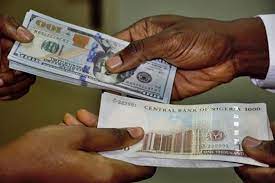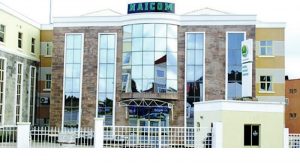
Nigeria’s headline inflation slowed to 20.12 per cent in August 2025, translating to a 1.76 per cent drop from the 21.88 per cent recorded in July.
The new inflation figure, which is contained in the August 2025 consumer price index (CPI) report released on Monday by the National Bureau of Statistics (NBS), is chiefly driven by the relative stability in the exchange rate market and the declining food prices ahead of harvest season.
The exchange rate improved from N1,553/$ in June to N1,530/$ in July and N1,532 in August, a movement that has been considered manageable compared to the wide swings in the past.
The NBS reports that the food inflation rate in August 2025 was 21.87 per cent on a year-on-year basis. This was 15.65 per cent points lower compared to the rate recorded in August 2024, when it was 37.52 per cent.
The NBS, however, acknowledged that the significant decline in the annual food inflation figure is technically due to the change in the base year.
On a month-on-month basis, the NBS said, the food inflation rate in August 2025 was 1.65 per cent, down by 1.47 per cent compared to July 2025 (3.12 per cent).
It attributed the decrease to a decline in the average prices of rice, guinea corn flour, maize flour, millet, semolina and soya milk.
The Guardian observed that there was a general drop in the price of food items in the market as new maize, groundnuts, and potatoes, as well as vegetables, flooded the market.
Some market women also believe that food items such as beans are enjoying a low price because those who hoarded the product, hoping that the price would rise, were forced to release them to reduce their losses, as the price of beans has remained low.
Food inflation, the major contributor to headline inflation in the country, maintained a steady drop in the first five months of 2025.
Falling from 26.1 per cent in January after rebasing, the inflation slowed to 23.51 per cent in February, 21.79 per cent in March and 21.26 per cent in April before hitting 21.14 per cent in May.
It, however, took an upwards swing in June, when it edged up marginally by 0.83 per cent to 21.97 per cent and further up in July to 22.74 per cent before dropping to 21.87 per cent in August.
Ekiti state recorded the highest rise in inflation year-on-year at 28.17 per cent in August, followed by Kano state at 27.27 per cent and Oyo state (26.58 per cent).
Zamfara state, with a 11.82 per cent rise in inflation, was the lowest, followed by Anambra state (14.16 per cent) and Enugu with 14.2 per cent.
Rise in food inflation over the one-year period was highest in Borno, where it was 36.67 per cent, Kano (30.44 per cent) and Akwa Ibom (29.85 per cent).
In the same vein, last weekend, the National Bureau of Statistics (NBS) released the country’s foreign trade statistics, which show Nigeria recorded a trade surplus of N7.46 trillion in the second quarter of 2025. The figure, it said, represents a 5.6 per cent rise over the N5.17 trillion recorded in Q1’25.






